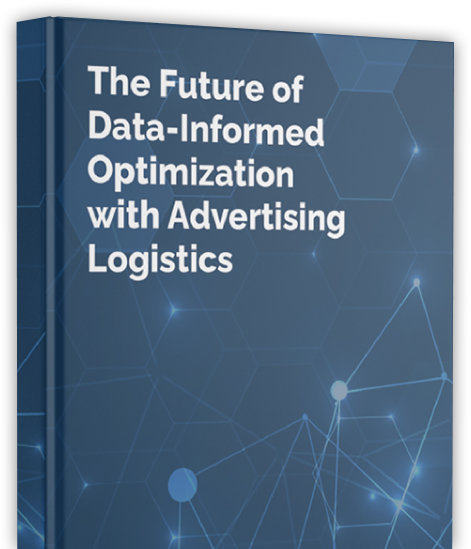Description
There is a big difference between transparency and observability and in order to get the whole picture, you need to focus on what is controllable and optimizable. Ask yourself what is truly driving audience quality and CPM, and find out how the right data plus the right machine learning can give your AdOps team the capability to drive sustainable revenue that adapts to the ever-changing market dynamics.
Transcript
Tony Winders: Hello, and welcome to another edition of On the SPOT. My name is Tony Winders. And today we’ll be putting PubWise Founder and CTO Stephen Johnston on the spot about transparency and observability in publisher reporting. Stephen, welcome and thank you for letting us pick your brain on another important and timely topic for advertisers and publishers.
Stephen Johnston: Thanks for having me.
Tony Winders: Stephen, there’s been a lot in the news lately about Google, their lawsuits and transparency around what they report to publishers. But transparency has been a topic of concern for many years. Maybe it’s in the news now, because of the Texas Attorney General’s lawsuit against Google, but that’s being talked about a lot. Is it really true about Google’s ad auction irregularities and that they’re keeping data from publishers? Do you think there’s truth to that? And if so, where does that stem from and what could or should publishers be having access to in order to make the best most informed decisions from their side?
Stephen Johnston: Is it true? That’s ultimately something that’s going to have to be potentially proven in a court case or with a lot of data beyond what we might have available, but I think we’re in the realm of, “Is Google doing all the things necessary to show or to give the confidence that they’re not?” People, for a while, have smelled smoke or smelled a bad smell. And a lot of it is around data. Whether Google’s reporting limits what you can see compared to other metrics, like, a dimension isn’t always available to another metric at a granularity you like. It’s always presented, like there’s some super difficult technical reason, and when you think about it, you think, “Well, that makes sense, that can be hard.” And then if you think a little bit deeper, you go, “Who’s Google?” These are the guys who say they’re going to do all these super hard things and they can’t just show me hourly data about something and in near real time? And then you start to look at the metrics that aren’t available, and you say, “Well, hold on, those are the metrics that I would use to really see how the auctions are performing over time, and versus other parts of the inventory, and maybe to get more insight or transparency into the behavior.” And I think that’s where that lack of confidence comes from. Whether Google’s ultimately found to really be cheating, I would hope that what comes out of this is that they’ve created this perception that there’s something funky, and then they haven’t given their own customers the tools to understand what’s really happening under the hood. I think that’d be the less cynical view. I try not to assume that they’re doing something bad. I think that they’re absolutely not providing enough data to show what’s really happening.
Tony Winders: Well, perhaps this is an opportunity for everyone to learn a little more about what we should be measuring, what is important, and what data do we care about that can actually be made helpful?
Stephen Johnston: We’ve got this thing, and it’s sort of endemic in the industry, in terms of never really talking about the whole picture of monetization. We’ve had this experience when we were publishers, and were talking to potential sources of demand, you ask them, “Well, how much more money are we going to make?” and they’ll quote CPM or something. “Our average customer is $2.50 CPM.” But what they don’t tell you is the other related metrics, so you’ve got a certain number of impressions, you’ve got a fill rate, and then you’ve got a rate at which those are sold, and that’s net revenue. Net revenue is really what you care about. You would sell one impression on your website for any CPM if it made you more money, and you would actually be better off in terms of user experience and a whole bunch of other things, if you could actually reduce your number of impressions, and improve the CPM in order to improve net revenue. So, I would just challenge people in general to have the full discussion. In our opinion, those questions aren’t fully answerable, and trying to be very honest, authentic and understanding of our customers when we talk to them. It’s tough to talk about, specifically, which of these metrics will improve by using our product. What we see is improvements long and meaningfully, that leads to greater net revenue, that leads to growth of revenue and leads to maintaining the revenue. And that’s really the whole picture of revenue for a publisher. If a person tells you they’re going to make you a 100% fill rate, the question is, “At what CPM?”, 100% fill at a penny isn’t worth as much as 50% fill rate at $5. Then the question is, “Well, for how long? Are you going to do something to juice this through auction dynamics and floors so the CPM shoots up and all I’m looking at is CPM because you set a floor and the fill rate drops, but CPM goes up, and maybe you get me a look at just CPM and focus on that.” If you’re not focusing on that whole picture of how revenue is really generated, then you become blind to some of the games that are played in terms of how it’s presented to you as a publisher. So, will it grow and will it maintain, are key things. A lot of SSPs have the ability to connect temporarily to demand under a new customer, can we get you a little juice? Then in month two, maybe that goes away. I’m not saying that everyone’s out there playing games, but the natural tendency is to only talk about segments of how revenue is produced, not the whole picture.
Tony Winders: It seems like net revenue should be what publishers care about most and providers like Google, send checks, and they give the metrics they give. It seems like the way you’re describing it, there’s a lot of complexity behind the scenes that I’m not even sure that every publisher could appreciate or even wrap their head around. How complex is it really? What are the variables that a publisher should know that we could surface and actually have them focus on meaningfully?
Stephen Johnston: Well, focusing solely on net revenue is a bit like having a baseball team where every batter comes up and focuses solely on home runs. And if you think about it, that’s not going to be a winning strategy, “I’m just gonna swing for the fences all the time.” Maybe you get lucky every once in a while. Now, ultimately, a baseball team absolutely cares about runs, and the most expedient way to get them would be to hit a home run every time you come up to bat. So that’s kind of the net revenue corollary, your base hits and things like that are CPM and fill rate, eligible impressions and sort of growth and maintenance and testing. So the question you’re asking is, what can you control? And that’s where our focus has evolved to looking at observability in advertising. And observability is around the things you can monitor that have a meaningful effect on what you’re doing. So what improves CPM? Better audience, that sort of scarcity. Like, if you refresh something 100 times a minute, then the auctions are seeing it 100 times a minute, then CPM plummets. And, when you look at fill rate and CPM, there’s this inflection point where the volume of impressions meets the best CPM for the highest multiple that leads to net revenue. And so it is complex, but that’s the hard work that needs doing if you’re doing this as a business. So if you’re out there and you’re doing these things, you can’t avoid the hard work, and the hard work is understanding that going to a provider and saying, “I want that check to be bigger.” Well, they can make it one dollar bigger but your responsibility is to bring in the elements that improve that over time. No demand partner can improve your audience. But, your audience dynamics are going to have the most effect on your revenue. But what we can provide is insight into what is selling. And that’s where we look at transparency and observability and providing enough data for you to say, “If I had more of that I would make more money, that audience is valuable.” That’s where our optimization algorithms are aligning SSPs to audiences in these big, macroscopic kinds of worldwide ways, geography, latency and timeouts and devices in ways that you as a publisher can’t really do at that level. But the higher the quality of the audience is fed into that, the better results you’re gonna see out of that really wide and dispersed broad optimization. So the thing is to look at elements of what drives CPM and Audience Quality, because Audience Quality really drive CPM and fill rate and if you’ve got a huge chunk of your audience that no one wants, that drop fill rate. If you’ve got a huge chunk of your audience that’s not very valuable, that drops CPM. Yeah, they may bid on it but not very well. So, our focus is on giving you access to those things meaningfully so you can say, “I’m going to go try to find more of that.” And I think that’s where Google’s catching some flack. Are they providing, particularly around AdX, enough insight into that? It’s because there’s almost a reluctance, they would claim that it allows you to game the auction dynamics? Well, if you’re on that side of it, it’s gaming and if you’re on this side of it, it’s optimization. If you dress your house up nicely, you stage it, and you know that the people coming have kids, so you put a crib in the kid’s room and you dress it up like the family that you think might move in there. Is that gaming house sales? No, but it sure might increase the value. So, I think that everybody can provide more data than what publishers are getting. That’s the value we saw initially with header bidding, was really putting all of that bid data accessible to the publisher, not just what won, but what lost and what the comparative metrics of win to loss were across different segments, reducing overlap of bidders and demand sources, so that you get more fill. It is complex, but there are things a publisher can focus on to affect it.
Tony Winders: When you think of observability and bringing some of that data forward, how does that look in practical terms for a publisher? Is it a reporting interface? Is it just that the algorithm takes care of it all? Or something in between?
Stephen Johnston: Something in between. And I think it’s a work in progress. We’re inventing this space of truly observable, in an academic sense, this control theory from the 50s saying it is observable and therefore controllable, and therefore optimizable. I think publishers have lacked that. So we are creating it, and it is initially an analytics question, presenting the data. We are capable of presenting a volume of analytics that is almost unintelligible to a person. And so that’s where we apply machine learning. We know that there are ways to improve the revenue, and when the volume of that becomes unwieldy for a person, we apply machine learning. But there’s plenty of things around audience dynamics that we’re developing and delivering that look like analytics, that tell you things. So, we can use bid dynamics as a proxy for traffic quality. So if you’re going out and you’re buying traffic from sources, and I mean in an above board way, you’re telling Taboola, “Run my thing.” You can have your problems with Taboola but they’re a valid source of traffic. Then which of those campaigns is producing the best traffic? Well, one proxy for that is, is it getting bought? So slicing and dicing process metrics and providing not just volume or sort of activity metrics, but value metrics, we’ve seen this huge boon to understanding the relative sources of traffic. What we want to do is leverage all of these other systems that are valuing traffic. So, if you’re trying to bring traffic into your website, the best proxy for its value is all the SSPs and all the DSPs and all the other partners that would buy it, versus the traffic they won’t buy. So we’ve done a lot around UTM parameters, not understanding campaigns, because those things are levers that the publisher can pull. They can go out and say, “I’m going to increase the budget to that provider and decrease the budget to that provider, I’m going to test something different for that provider.” And instead of just seeing, I got 10 times the traffic from those guys, then a week later, realizing it didn’t convert at all, we can tell you 15 minutes after you launch that campaign, whether that traffic’s converting or not.
Tony Winders: The things that stood out to me from our conversation today are that observability is about the things that you can monitor and meaningfully impact and bring that forward.
Stephen Johnston: Observability is the set of things that inform you about the behavior of the system, versus just monitoring. That’s an important distinction versus transparency. In transparency, you get a lot of things you probably can’t have any control over.
Tony Winders: What levers can you actually pull to make a difference?
Stephen Johnston: Transparency is like the receipt for your meal, you got these eight items, and it costs you fifty bucks. The nutritional information for each of those is observability. Because then when you have your next meal, you could say, “I need more protein so I’m going to eat more of this quinoa, and less of the bread.” That’s observability versus transparency. Transparency would just tell you it cost you fifty bucks. But if your goal is to be more healthy, the price doesn’t mean anything, though it’s fully transparent.
Tony Winders: Good analogy.
Stephen Johnston: Or, they bought the thing that you overate. If the restaurant told you how much all the things you ate cost, that would be fully transparent, and it would have no basis on whether it was healthy or not.
Tony Winders: Good point. Well, I always want to leave our audience wanting more Stephen and I definitely have so much more to ask you. But this is a good scratching the surface of observability and focusing on the whole picture in taking control of the things that matter and putting it into practice for publishers. Thank you very much for the insight. This has been On the SPOT with Stephen Johnston, CTO and Founder of PubWise, we look forward to seeing you next time.
Stephen Johnston: Thanks.





